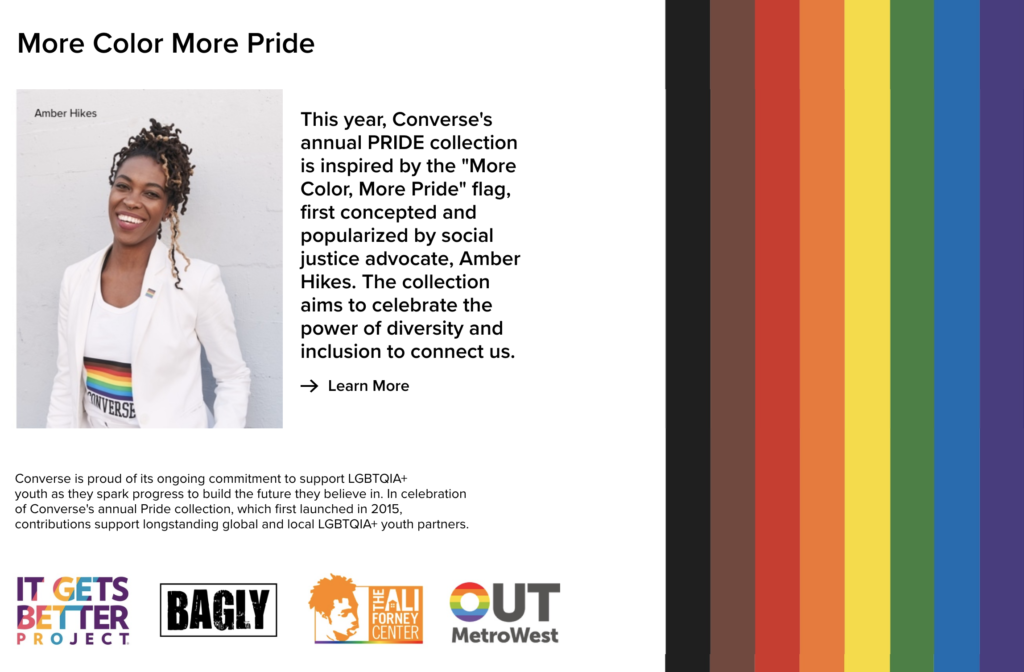Group Gordon’s Jacob Rodriguez discusses how the best brand messages this year recognize the intersections between Pride 2020 and the Black Lives Matter movement.
As Pride 2020 nears its end and nationwide protests against racial injustice continue, a number of companies have struggled to decide when to vocalize support for Black Lives Matter and when to promote celebration of Pride. When these brands weigh black squares against rainbows and standing up for Black lives against celebrating queer rights, they miss a fundamental point: the movements have been and always will be intertwined.
Pride has evolved over the past 50 years into a celebration of the LGBTQ+ population and an opportunity for brands to connect with this demographic through PR and marketing campaigns. On the surface, with its bright colors, flashy outfits, and fun-spirited nature, celebrating Pride seems at odds with the powerful, somber, and charged conversations and protests of the Black Lives Matter movement. However, Pride “parades” have roots as marches in commemoration of the Stonewall riots in which LGBTQ+ New Yorkers (mostly Black, indigenous, and people of color — BIPOC) led protests against violent mistreatment from police. Sound familiar? It should.
Gone are the days when a brand could slap a rainbow on a t-shirt, post a black square on social media, and call it a day. Now more than ever, brands need to do the legwork to deepen their understanding of these issues, including how they intersect, and act in meaningful ways. Consumers increasingly demand more from the brands they support, especially in their expectations of how brands handle social responsibility and politics. This month has presented an opportunity for brands and leaders to take real action on larger systemic issues both internally and externally, and consumers have had little patience for those just paying lip service.
Hollow gestures and vague statements can put a brand in a worse position than saying nothing at all. Actions speak louder than words, as L’Oréal learned when an Instagram post in support of Black Lives Matter earlier this month unearthed the companies’ mistreatment three years ago of its first transgender ambassador, Munroe Bergdorf. However, the company quickly took steps to own up to and apologize for its past mistakes. L’Oréal has since hired Bergdorf to be part of its new Diversity and Inclusion Advisory Board and has pledged donations to organizations supporting transgender youth and Black Pride.
L’Oréal learned an important lesson about what consumers needed to see from brands this Pride month: Identities and social justice movements don’t exist in a vacuum. Pride 2020 has presented an opportunity for brands to show they understand intersectionality. While many brands missed this opportunity, the best Pride 2020 campaigns have included representations of queer Black, indigenous, and people of color in their marketing, communications, and partnerships with organizations that support these communities. For example, Converse’s More Color More Pride campaign and collection highlights a more inclusive view of Pride and is backed by the company’s longstanding support of both LGBTQ+ and BIPOC communities. Similarly, Reebok’s “All Types of Love” campaign celebrated the intersectional identities of several queer activists, alongside donations to LGBTQ+ organizations.

The brands that got it right this Pride month are the ones that recognized the real roots of Pride. In both their public-facing efforts and behind the scenes, they took actions to support queer and BIPOC communities, further the larger BLM movement, and make substantive changes to foster more diverse and equitable corporate cultures.